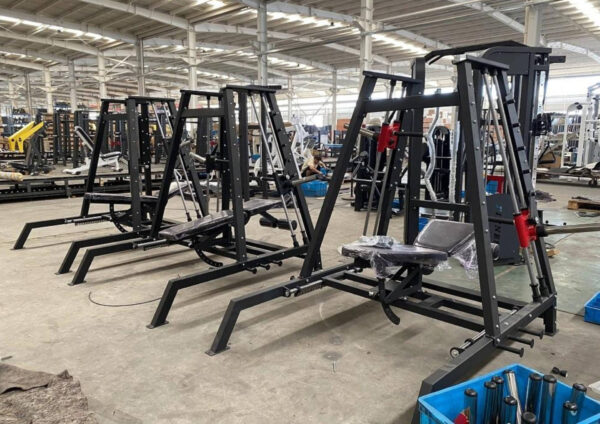Detailed Report On Gym Machine Manufacturing
Gym machine manufacturing involves creating exercise equipment for fitness centers and home use. From treadmills to weights, these machines promote physical well-being, supporting healthy lifestyles and workouts.
Introduction
Detailed Report on Gym Machine Manufacturing is as follows.
The design, development, and production of exercise equipment used in fitness centers, gyms, and home fitness facilities is referred to as gym machine manufacturing. These pieces of equipment are designed to provide resistance and support during workouts, helping users improve their strength, endurance, and general fitness. To create long-lasting and effective gym machines, the manufacturing process is complicated, requiring attention to detail, safety requirements, and high-quality materials. The design process is the initial stage in the creation of gym machines. Engineers and designers collaborate to develop new machines or enhance existing ones. All aspects of functionality, ergonomics, safety, and user experience are considered.
The construction of gym machines is a vital stage that requires professional personnel. To build the frames, weight stacks, wires, and other components, workers precisely follow assembly instructions. To provide safe and flexible training, locking mechanisms and customizable settings are integrated. Each workout machine is thoroughly tested and quality-controlled once it has been assembled. The structural integrity, load-bearing capability, and smooth functioning of the equipment are all examined. Any defects or discrepancies are rectified in accordance with industry standards and safety rules.


Detailed Report Sample On Gym Machine Manufacturing



Market Potential Of
Gym Machine Manufacturing
The Gym machines market was valued at $13.2 billion in 2020 and is expected to increase to $15.4 billion by 2028, growing at a 0.3% CAGR between 2021 and 2028.
The fitness equipment market is segmented by kind, end user, price point, and geography. There are three categories of fitness equipment on the market: cardiovascular training equipment, strength training equipment, and miscellaneous equipment. End-users are classified as fitness clubs/gyms, hospitality, health, corporate, public (hospitals and medical centers, and public institutions), and home customers. Based on price point, the market is segmented into premium/luxury and mass categories. Each end-user and price point group is broken further into cardiovascular training equipment, strength training equipment, and miscellaneous equipment.

The rising demand for health and fitness is driving the exercise equipment industry. Rising urbanization, the prevalence of obesity and chronic illnesses due to unhealthy lifestyles, growing corporate wellness initiatives, and demand from various sectors are key drivers driving the fitness equipment market’s rise. Furthermore, increased awareness of the hazards of rising obesity, a growing senior population, and a rising desire for minimally invasive and non-invasive operations all contribute to the market’s overall development. High installation or setup costs of equipment or gadgets, on the other hand, are predicted to stymie market development throughout the forecast period, as is the growing demand for resale of cost-saving workout equipment.
Contents of Project Report
A project report helps you identify whether a project is worth pursuing. It presents the holistic view and brings complete insight of the business and its activity.
It acts as a guide for all the business operations, aids in taking all financial decisions related to the existing businesses and to the start-ups. It serves as roadmap to the business and provides information to the outsider who are wanting to know more about the business.
You will have the opportunity to build new goals and expansion ideas in one single document. Everyone, from the banks to potential investors, will need to have a look at the project report before they shell out any money.
A well drafted project report generally consists details about:
- Brief History of the Business
- The Promoters
- SWOT Analysis
- Industry Outlook
- Past Financial Statements
- Projected Financial Statements
- Infrastructure and Human Resource required
- CMA data
- Business model
- Requirement of Working Capital Funds
- Means of Finance
Other relevant information, if any.
